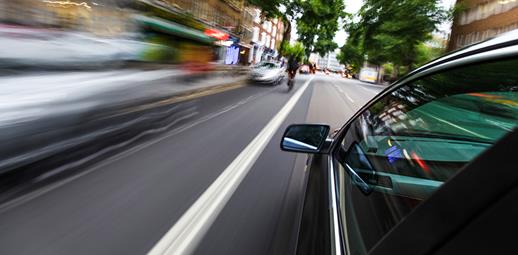
Whether they’ve unintentionally crept above the limit in a 30mph zone or purposefully put their foot down on a quiet motorway, most drivers will have exceeded the speed limit at one time or another.
But just how common is it to speed, and why do people do it?
How many drivers speed?
Studies suggest that speeding is a problem for a large number of drivers, particularly on low-speed limit roads.
Statistics from the Department for Transport show that, in 2018, a whopping 87% of drivers exceeded the speed limit on 20mph roads, with nearly a quarter (22%) exceeding the speed limit by more than 10mph.
When the speed limit increases to 30mph, drivers tend to be more obedient, yet more than half (52%) of motorists still drive too fast.
The situation is only slightly better on motorways, with almost half (46%) of drivers driving above the speed limit.
The different types of driver
Over a decade ago, a study for the Department of Transport identified three types of drivers: compliant drivers, moderate speeders and excessive speeders.
According to the same study, around half of drivers are compliant drivers, who usually observe speed limits.
Moderate speeders, who occasionally exceed speed limits, make up a third of drivers, while around 14% are classed as excessive speeders – those who regularly go faster than the speed limit. The study suggested that the latter normally ignore the 30mph limit, often by a wide margin.
What makes us speed?
Dr. Lisa Dorn, associate professor of driver behaviour at Cranfield University, says there are many reasons why drivers break the speed limit.
She says that some drivers have simply adopted a driving style of habitually breaking speed limits and driving quickly, almost like driving on autopilot.
Personality traits underpin a lot of speeding behaviour, too, with speeders having thrill-seeking or aggressive tendencies, as well as chaotic lifestyles. Speeders may also be particularly vulnerable to time pressures, feeling the need to speed to make up for their own poor time planning. However, speeding is not likely to save these drivers that much time.
Dr. Dorn also pointed out that some drivers are influenced by other road users; if others are breaking the speed limit, they may feel they also need to do so.
Motivational factors also contribute to speeding behaviours. Some drivers speed because they believe arriving at their destination as quickly as possible is more important than staying within the speed limit - for example, they may be worried about missing an appointment.
According to Dr. Dorn, social pressures play a part in speeding, too, as you could have a passenger in the vehicle who’s urging you to drive faster.
No £25 admin fee
When you update your policy online, e.g. amend driver, address or car details.
The impact of speeding
The impact of speeding can be far more serious than a fine and points on your licence.
According to data from the Department for Transport, driving at an unsuitable speed contributes to more than a tenth of all injury collisions reported to the police.
Research cited by the Royal Society for the Prevention of Accidents (RoSPA) suggests that a drop of just 1mph in average speeds would see the rate of accidents fall by around 4%.
RoSPA also points out that higher speeds lead to more serious accidents, with the risk of a fatal injury rocketing from 17% at 40mph to 60% at 50mph.
Unsurprisingly, the evidence seems to suggest that if fewer drivers exceeded the speed limits, the roads would be a lot safer for everyone.
Go to Solved to read more about road safety.
You can find out more about our car insurance here.
